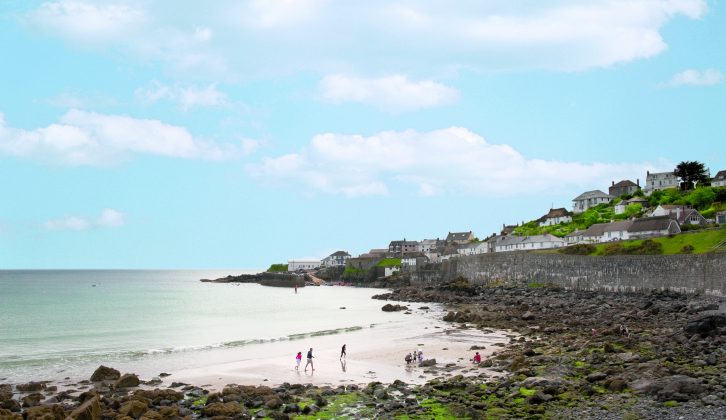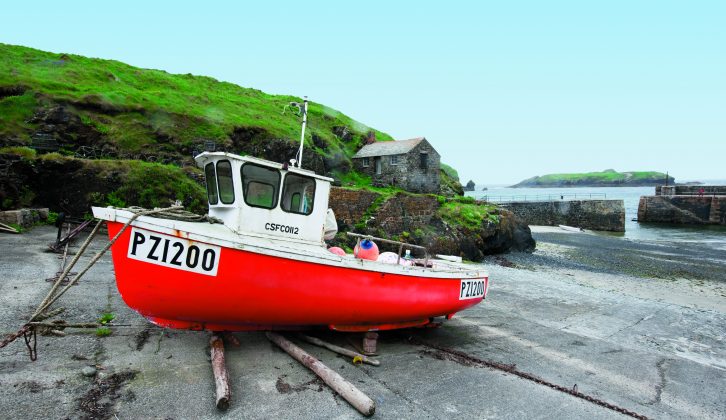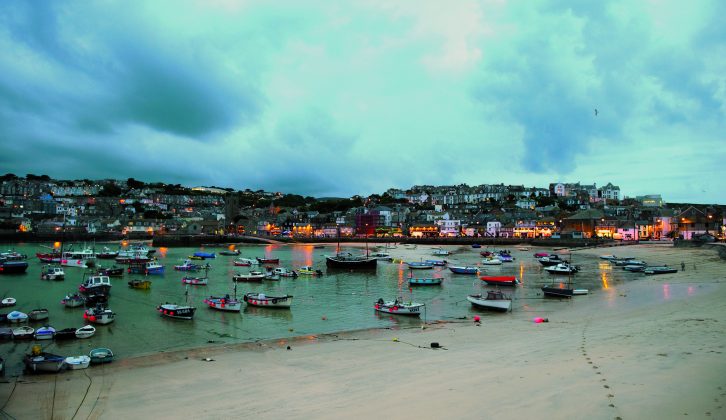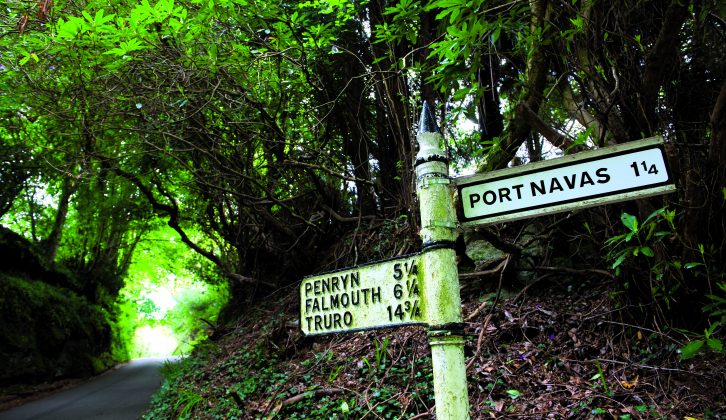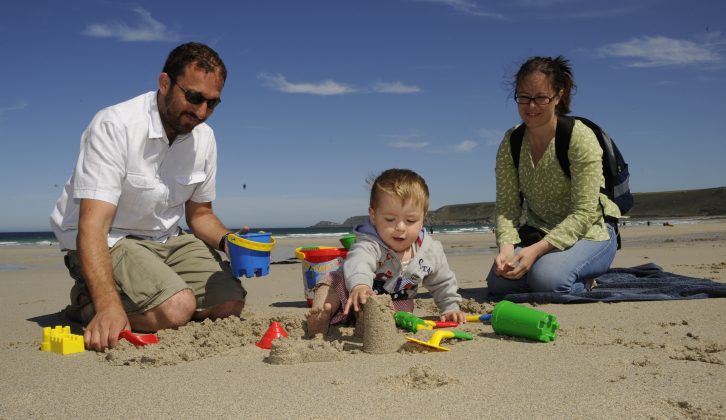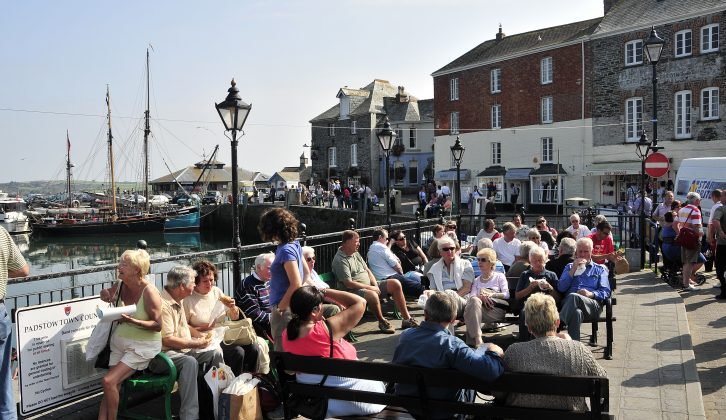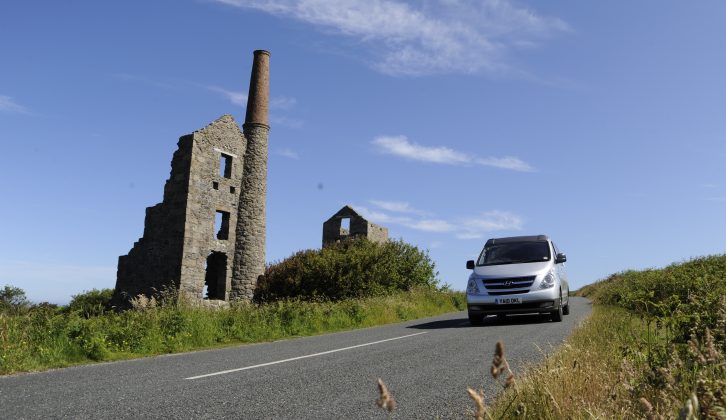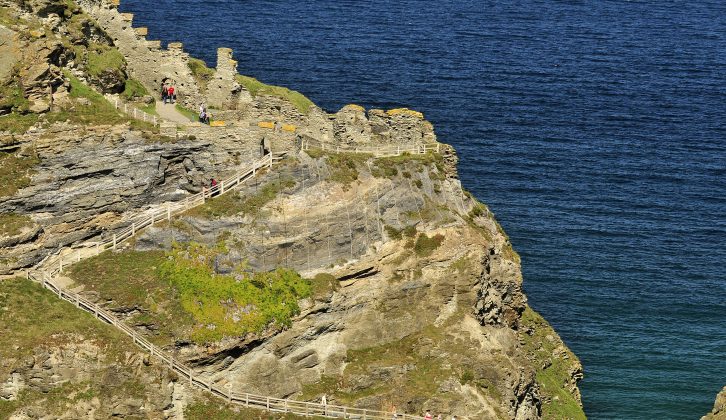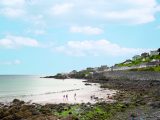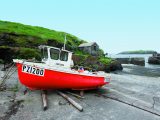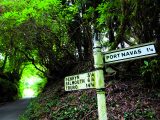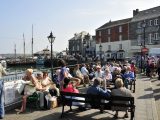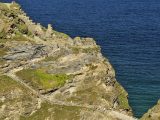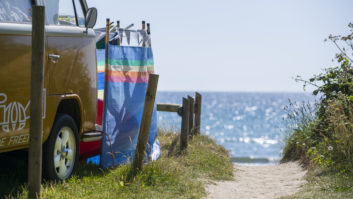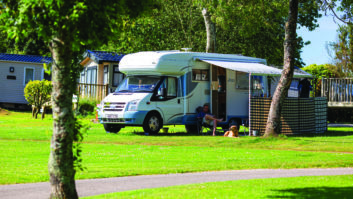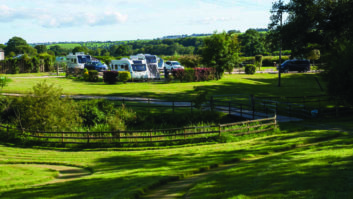As Britain’s most southwestern county, a vast promontory with a pointed toe jutting into the Atlantic Ocean, Cornwall provides some impressive statistics. 80% of the county is surrounded by sea, with 295 miles (476km) of coastline – the longest stretch of any county in the UK. Almost a third of Cornwall is designated as an Area of Outstanding Natural Beauty, an accolade granted the same status and protection as a National Park.
Of the twelve separate AONBs in Cornwall, eleven relate to coastal areas, such as the wild Lizard Peninsula on the south coast of the county (and mainland Britain’s most southerly point) or the heather-covered headlands around St Agnes and the disused mine of Wheal Coates. The only inland AONB is the mystical Bodmin Moor, an area through which many holidaymakers pass on the A30 to more westerly aspects of Cornwall, but really is worth visiting in its own right, if only to search for its notorious and equally mysterious feline Beast of Bodmin Moor.
In recognition of its iconic and significant mining traditions, Cornwall also boasts a UNESCO World Heritage Site, made up of ten separate areas throughout the county, each based upon important associations with mining.
To the north of the county lie long and sandy expanses, such as Porthtowan, Widemouth and Gwithian, beloved by beachgoers and surfers alike for the huge Atlantic swells that roll towards the coastline. To the south, the coastline is more rugged, filled with creeks, river estuaries and fishing villages like Mevagissey with bobbing boats in sheltered harbours. And, at the very far western tip lies the aptly named Land’s End, the start – and finish – of many a mammoth journey to and from its northern counterpart, Scotland’s John O’Groats.

In amongst the rocks, crags and creeks, moors and headlands is a collection of provincial towns, each oozing a character synonymous with Cornwall’s Celtic roots: the fishing inlet town of Fowey, food-consumed Padstow, art-induced St Ives and yacht-inspired Falmouth. Not forgetting, of course, the surfing metropolis of Newquay.
But don’t miss out on the likes of Truro, Cornwall’s county seat and cathedral city or smaller, enchanting habitations such as Port Isaac and St Agnes on the north coast or St Mawes and Gorran Haven to the south.
Not least, just a few miles off the western tip of Cornwall, in seas the colour of precious jewels with beaches worthy of a tropical location, lay the Isles of Scilly. A group of islands – five of them inhabited – with more footpaths than there are roads, and a microclimate that typifies regions closer to the Tropics, they remain unspoilt, and in a retreat-like state found nowhere else in Britain.
Things to do
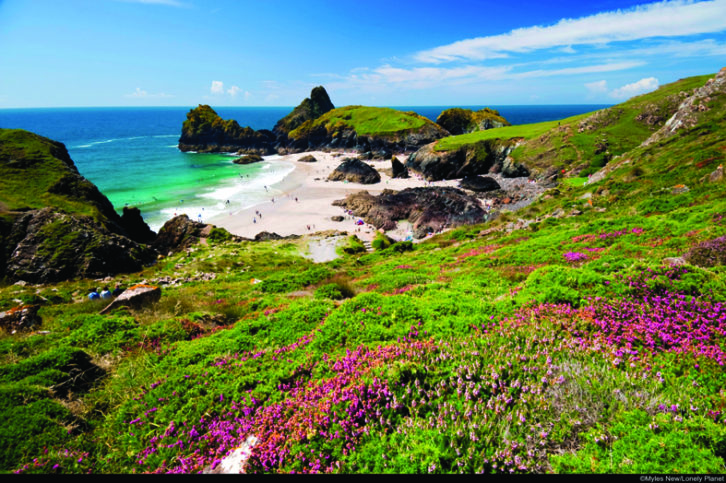
1.Beach activities and surfing. Cornwall has five beaches currently with Blue Flag status: Carbis Bay Beach (St Ives), Gyllyngvase (Falmouth), Polzeath (also renowned as a noteworthy surfing centre), Porthmeor (St Ives) and Porthtowan. Not forgetting however, other beautiful sands such as Sennen Cove, Gerrans Bay, Gorran Haven, Mother Ivey’s Bay or Lantic Bay near Fowey.
2.Walk the South West Coast Path. To really appreciate the sheer beauty of the Cornish coastline, why not walk along it? You can pick up this long distance National Trail at Higher Sharpnose Point on the north coast or Mount Edgecumbe Country Park near Torpoint in the south.
3.Visit UNESCO World Heritage Sites in Cornwall. Find out more about Cornish mining through tourist attractions like Geevor Tin Mine, Poldark and Levant Mines, Cotehele Mill, Morwellham Quay, Heartlands and Godolphin House.

4.Visit Cornwall’s gardens and country houses. Only rediscovered in 1990, the incredible Lost Gardens of Heligan near Mevagissey is worth a trip. Or how about the giant, temperature-controlled bubbles of the Eden Project, created by Tim Smit (who also discovered the gardens at Heligan), northeast of St Austell, or head to the hidden gardens of Trelissick, near Truro and the large country piles of Lanhydrock and Cotehele are all lovely places to visit during your caravan holidays in Cornwall.
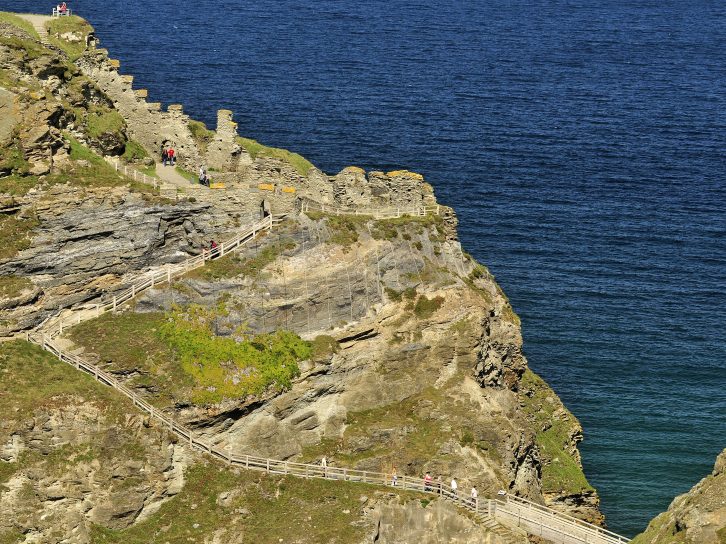
5.Discover pre-historic sites in Cornwall. Walk the causeway at low tide to visit St Michael’s Mount in Mount’s Bay. The privately-owned island, once home to Benedictine monks and linked to Mont St Michel in France, is now home to a tiny community and topped by a 12th-century church. During your caravan holidays in Cornwall you can also visit the dramatic Tintagel Castle, reputed to be the birthplace of King Arthur, or step back beyond to visit Celtic standing stones such as the Merry Maidens near Land’s End, or the Lanyon Quoit near Morvah.
When to visit
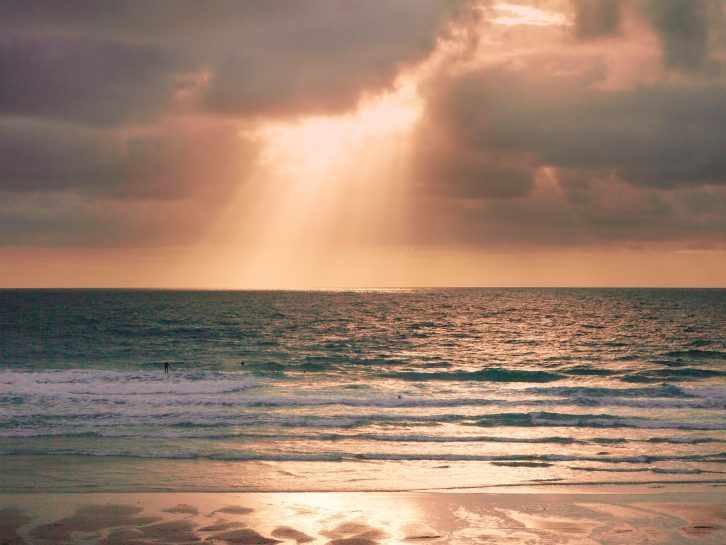
Cornwall’s peak season, particularly for camping, is May to September. That means late March/April – when you can see Cornish daffodil fields in bloom – and late September/October can be great months to visit; the roads and major tourist attractions are all quieter.
Cornwall knows how to party, so you’ll always find something going on to tempt you to the county, whether it’s the summer sailing events, the springtime garden shows or the festivals of light to brighten the long, dark days of winter.
Who doesn’t like a good, traditional Cornish pasty? To find the very best, head to the World Pasty Championships in February, or for garden mania, Cornwall’s annual Spring Flower Show, which takes place at Lostwithiel in March/April. The Royal Cornwall Show, the county’s agricultural showcase, is held every June at the county showground, Wadebridge.
You can put one foot in front of another with the Boscastle Walking Week to explore the minutiae of this north coast village in April, sing along at the Falmouth International Sea Shanty Festival in June, or watch battle commence in the final week of August and beginning of September as the County Pilot Gig Championships get underway, a major event in the Cornish cultural calendar.
Finally, the Cornwall Film Festival, celebrating Cornish film-making, offers several premieres throughout November.
Getting there
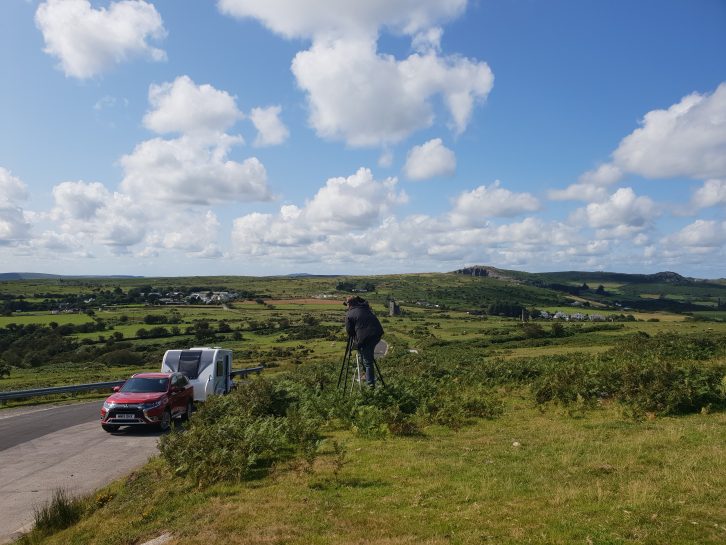
Caravanning in Cornwall means you’re likely to have to use the county’s main artery, which runs down the spine of the county: the A30. Connecting with junction 31 of the M5 at Exeter, it travels through Devon and the entire length of Cornwall, finishing at Land’s End.
Most of the A30 is dual carriageway to Camborne, though this can still become jammed in the height of summer, particularly at weekends. Many caravanners drive through the night or set off at dawn to avoid the queues (though, of course, if everyone does this, it will have the reverse effect!) and find either a late night campsite en route, or a lay-by stopping off point. Again these can become busy, so check for roadworks in Cornwall and plan your route accordingly.
There are several service stations on the A30 for stopping points, perfect for breaking up a long tow. These include the new Cornish Gateway, due to open at Victoria, near Bodmin, in spring 2014. It will be the largest of all the service stations in Cornwall. Exeter Services at junction 30 of the M5 also has larger parking facilities for caravans, just prior to accessing the A30.
An alternative route to the southern coast of Cornwall includes the A38, also accessed off junction 31 of the M5, skirting the southern edge of Dartmoor, Plymouth and across the Tamar Bridge. There is a toll on the bridge, though this is one way from Saltash (Cornwall) to Plymouth (Devon) direction. Those visiting (or returning from) Cornwall regularly may find the TamarTag electronic collection system useful, with faster crossing times and a 50% reduction in the toll.
For the north Cornish coast, the alternative is the A39 ‘Atlantic Highway’ from Barnstaple in Devon to Bude in Cornwall and beyond to Wadebridge, joining up with the A30 southwest of Bodmin. There are frequent delays crossing the River Taw at Barnstaple, the road is single-carriageway and narrow in places so this road is only advisable if you are in no hurry to reach your destination – and your fellow travellers behind you, likewise!
When booked onto hideaway coastal campsites some miles off the main arteries, it’s worth checking if the sites have recommended arrival and departure times to avoid two-way caravan traffic on some of Cornwall’s prettiest, but narrowest, high-hedged lanes. Some may also advise you of the best, most caravan friendly route to take to the site.
It’s not possible to take a caravan (or indeed a car) to the Isles of Scilly. The Scillonian III ferry sails six days a week from March to November (plus Sundays from July to September) with a two-hour 40-minute crossing from Penzance to St Mary’s, the Scilly Isles’ largest island. The Skybus air service also operates to St Mary’s from Land’s End (15-minute flight), Newquay (30 minutes) and Exeter (60 minutes). Just two campsites are sited on the islands, for tents only, so you’ll need to leave your caravan on the mainland and take canvas with you instead.
Where to stay
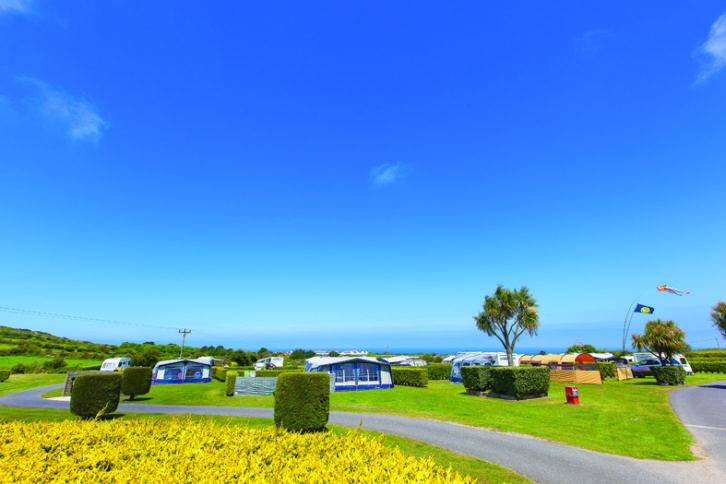
For some of the best caravan parks in Cornwall, take your pick from the Top 100 Sites. In the 2022 awards, five camping and touring parks featured from Cornwall.
You can find out about the other top parks that were included by reading our guide to the best caravan sites.
Additionally, if you’re looking for a new tourer, we’ve rounded up the contenders for the best caravan.
If you liked this… READ THESE:
10 Top Sites for World Heritage
Bude: Practical Caravan Travel Guide
Great Escape: Cornwall’s Coast and Country
If you’ve enjoyed reading this article, why not get the latest news, reviews and features delivered direct to your door or inbox every month. Take advantage of our brilliant Practical Caravan magazine SUBSCRIBERS’ OFFER and SIGN UP TO OUR NEWSLETTER for regular weekly updates on all things caravan related.
Cornwall has 295 miles of coastline – the longest stretch of any county in the UK
Things To Do
Getting There
Caravanning in Cornwall means you’re likely to have to use the county’s main artery, which runs down the spine of the county: the A30. Connecting with junction 31 of the M5 at Exeter, it travels through Devon and the entire length of Cornwall, finishing at Land’s End.
Most of the A30 is dual carriageway to Camborne, though this can still become jammed in the height of summer, particularly at weekends. Many caravanners drive through the night or set off at dawn to avoid the queues (though, of course, if everyone does this, it will have the reverse effect!) and find either a late night campsite en route, or a lay-by stopping off point. Again these can become busy, so check for roadworks in Cornwall and plan your route accordingly.
There are several service stations on the A30 for stopping points, perfect for breaking up a long tow. These include the new Cornish Gateway, due to open at Victoria, near Bodmin, in spring 2014. It will be the largest of all the service stations in Cornwall. Exeter Services at junction 30 of the M5 also has larger parking facilities for caravans, just prior to accessing the A30.
An alternative route to the southern coast of Cornwall includes the A38, also accessed off junction 31 of the M5, skirting the southern edge of Dartmoor, Plymouth and across the Tamar Bridge. There is a toll on the bridge, though this is one way from Saltash (Cornwall) to Plymouth (Devon) direction. Those visiting (or returning from) Cornwall regularly may find the TamarTag electronic collection system useful, with faster crossing times and a 50% reduction in the toll.
For the north Cornish coast, the alternative is the A39 ‘Atlantic Highway’ from Barnstaple in Devon to Bude in Cornwall and beyond to Wadebridge, joining up with the A30 southwest of Bodmin. There are frequent delays crossing the River Taw at Barnstaple, the road is single-carriageway and narrow in places so this road is only advisable if you are in no hurry to reach your destination – and your fellow travellers behind you, likewise!
When booked onto hideaway coastal campsites some miles off the main arteries, it’s worth checking if the sites have recommended arrival and departure times to avoid two-way caravan traffic on some of Cornwall’s prettiest, but narrowest, high-hedged lanes. Some may also advise you of the best, most caravan friendly route to take to the site.
It’s not possible to take a caravan (or indeed a car) to the Isles of Scilly. The Scillonian III ferry sails six days a week from March to November (plus Sundays from July to September) with a two-hour 40-minute crossing from Penzance to St Mary’s, the Scilly Isles’ largest island. The Skybus air service also operates to St Mary’s from Land’s End (15-minute flight), Newquay (30 minutes) and Exeter (60 minutes). Just two campsites are sited on the islands, for tents only, so you’ll need to leave your caravan on the mainland and take canvas with you instead.

